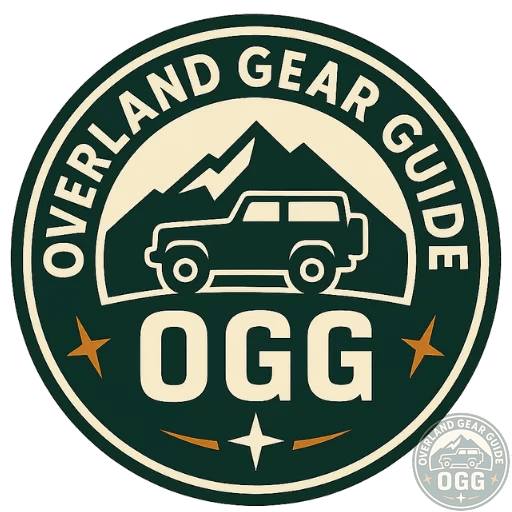Ultimate Overland Tyre Pressure Calculator
Dial in safe, trail-tested pressures by vehicle, load, terrain, speed, tyre size and hardware. Export a printable card and save your setup.

Why tyre pressure matters off-road
Tyre pressure is your #1 traction tool. Aired-down tyres lengthen your contact patch, improve grip, protect the vehicle and smooth out corrugations. But pressures depend on a dozen factors: vehicle class, axle weight, loadout, towing, terrain, speed, tyre construction, rim hardware and temperature. This calculator blends those inputs into a sensible starting point — then lets you save a setup and export a pocket-card for quick trail reference. Learn more at Overland Gear Guide.
Overland Tyre Pressure Calculator
Add your setup, terrain and extras — get front/rear recommendations in PSI or kPa.
Vehicle
Tyres & Rims
Terrain
Actions
How to use this calculator
- Select your vehicle type and typical load.
- Add towing, speed band and local temperature.
- Enter tyre size (e.g., 285/70R17) or flotation (33×12.5R15).
- Tick hardware (LT tyres, beadlocks, bull bar, canopy, RTT, drawers).
- Choose terrain or tap a preset (Sand, Rocks, Reinflate).
- Optionally enter axle weights and door-placard pressures.
- Hit Calculate, then export a printable card.
Trail safety tips
- Drive slower when aired down to manage heat and sidewall flex.
- Avoid sharp steering inputs on very low pressures without beadlocks.
- Re-inflate to road pressures before long sealed/high-speed sections.
- Use a quality gauge & inflator; check pressures cold when possible.
Overland tyre pressure FAQs
How low can I go without beadlocks?
As a rule of thumb, keep off-road minimums around 16–18 PSI for LT tyres without beadlocks; slower speeds allow lower than highway, but avoid aggressive manoeuvres.
Do bigger tyres always mean lower pressure?
Larger diameter tyres can support the same load at a slightly lower pressure, but speed, construction, load and terrain still dominate the final number.
Does temperature change my pressures?
Yes — roughly ~1 PSI per 10 °C vs a 20 °C reference. The tool nudges recommendations accordingly.

